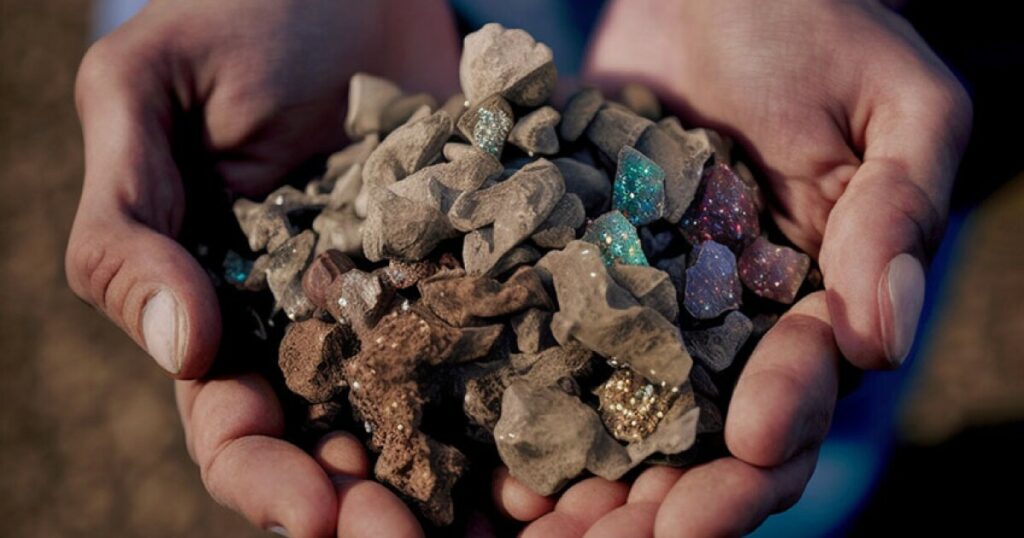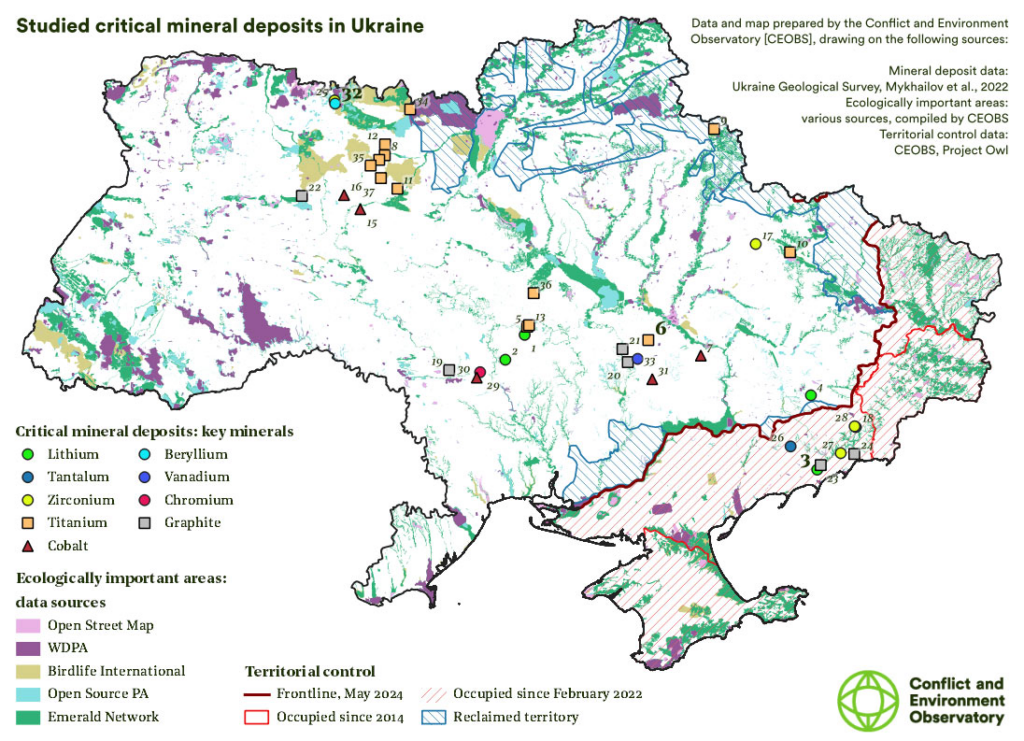
- Under Trump’s second term, U.S. assistance to Ukraine is likely to shift from a broad-based commitment to an explicitly interest-driven policy.
- The global race for critical minerals has intensified, with the U.S., China, and the EU all vying for access to resources that underpin modern industries, including electric vehicles, semiconductors, and advanced weaponry.
- As Ukraine sits atop vast reserves of rare earth elements (REEs), lithium, and other strategic minerals vital for global supply chains, the intersection of geopolitics, economic security, and military alliances is becoming more pronounced.
The foreign policy approach of Donald Trump’s second term, widely expected to be shaped by his “America First” doctrine, is poised to reframe U.S. support for Ukraine. Unlike the values-driven narratives that have dominated previous administrations’ discourse, Trump’s support appears increasingly transactional, particularly in the realm of critical minerals. As Ukraine sits atop vast reserves of rare earth elements (REEs), lithium, and other strategic minerals vital for global supply chains, the intersection of geopolitics, economic security, and military alliances is becoming more pronounced.
Critical Minerals: The New Frontline of Geopolitics
The global race for critical minerals has intensified, with the U.S., China, and the EU all vying for access to resources that underpin modern industries, including electric vehicles, semiconductors, and advanced weaponry. The U.S. is heavily dependent on China for refining and processing these minerals, a vulnerability that Trump has previously sought to address by diversifying supply chains.
Ukraine, with an estimated $3.4 trillion in untapped mineral wealth, has emerged as a key battleground in this geopolitical contest. The country possesses large deposits of lithium, titanium, and other REEs, making it an attractive partner for the U.S., particularly as Washington aims to decouple from Chinese supply chains. The prospect of leveraging Ukraine’s resources in exchange for continued military and financial support aligns with Trump’s transactional approach to alliances.
Trump’s Ukraine Policy: From Military Aid to Resource Diplomacy
Under Trump’s second term, U.S. assistance to Ukraine is likely to shift from a broad-based commitment to an explicitly interest-driven policy. While military aid may continue, its justification will likely be framed in terms of direct American benefits rather than broader European security. This shift echoes Trump’s past scepticism toward NATO and his demands that allies “pay their fair share.”
The idea of resource-driven aid to Ukraine has already gained traction among policymakers in Washington. Several reports indicate that negotiations between U.S. officials and Kyiv have included discussions on securing exclusive access to Ukraine’s rare earth metals in exchange for military aid. This aligns with Trump’s broader economic nationalism, which prioritizes securing American industries against Chinese competition.

Strategic Implications: A New Form of Neocolonialism?
Critics argue that Trump’s approach could be seen as a form of modern economic colonialism, where military aid is not given based on shared democratic values but rather on the condition of securing lucrative resource deals. This could strain U.S.-Ukraine relations if Kyiv perceives Washington as an opportunistic partner rather than a committed ally.
Furthermore, such a shift in policy could have significant repercussions for Europe. The European Union has been investing heavily in diversifying its own supply chains for critical minerals, and a U.S.-Ukraine deal could sideline European interests. This could, in turn, create fractures within the Western alliance, as Europe seeks greater autonomy in securing its own energy and resource needs.
China’s Response: A Countermove in the Global Resource Game
China, which currently dominates global REE processing, is likely to view any U.S. resource agreements with Ukraine as a direct challenge to its economic and geopolitical interests. Beijing has previously demonstrated its willingness to leverage economic coercion, as seen in its restrictions on rare earth exports to Japan in 2010. If Ukraine aligns more closely with the U.S. in critical mineral trade, China may respond by tightening its own supply chains or increasing economic pressure on Kyiv.
Conclusion: The Future of U.S.-Ukraine Relations Under Trump 2.0
A second Trump administration is poised to reshape the geopolitical landscape of U.S.-Ukraine relations, shifting from a security-driven to a resource-driven framework. While this approach aligns with Trump’s emphasis on economic nationalism and reducing dependence on China, it risks alienating European allies and intensifying great-power competition. Whether this strategy will yield long-term benefits for the U.S. or further destabilize global supply chains remains to be seen.
References:
- Trump Seeks Ukraine’s Natural Resources in Exchange for Military Aid nypost.com
- Zelensky Offers Mineral Partnership to Secure U.S. Support reuters.com
- Ukraine Open to Trading Rare Earths for U.S. Military Aid wsj.com
- Trump Wants Ukraine’s Rare Earth Elements as Condition for Further Aid apnews.com
- Ukraine Delays Critical Minerals Deal with U.S. to Let Trump Take Credit kyivindependent.com
- Ukraine and USA Partner on Critical Minerals Supply Chain Cooperation minexforum.com
- Ukraine Welcomes Trump’s Offer to Trade Minerals for Military Support stripes.com
- Ukraine’s Critical Mineral Wealth: A Strategic Asset yahoo.com
Shashank is a Master’s student in Diplomacy, Law, and Business at O.P. Jindal Global University. He is also a researcher and coordinator at the Center for Global South and the Center for Southeast Asian Studies. His research interests include Southeast Asia, Chinese foreign policy, India’s Act East Policy, and global security dynamics. Views expressed are the author’s own.
